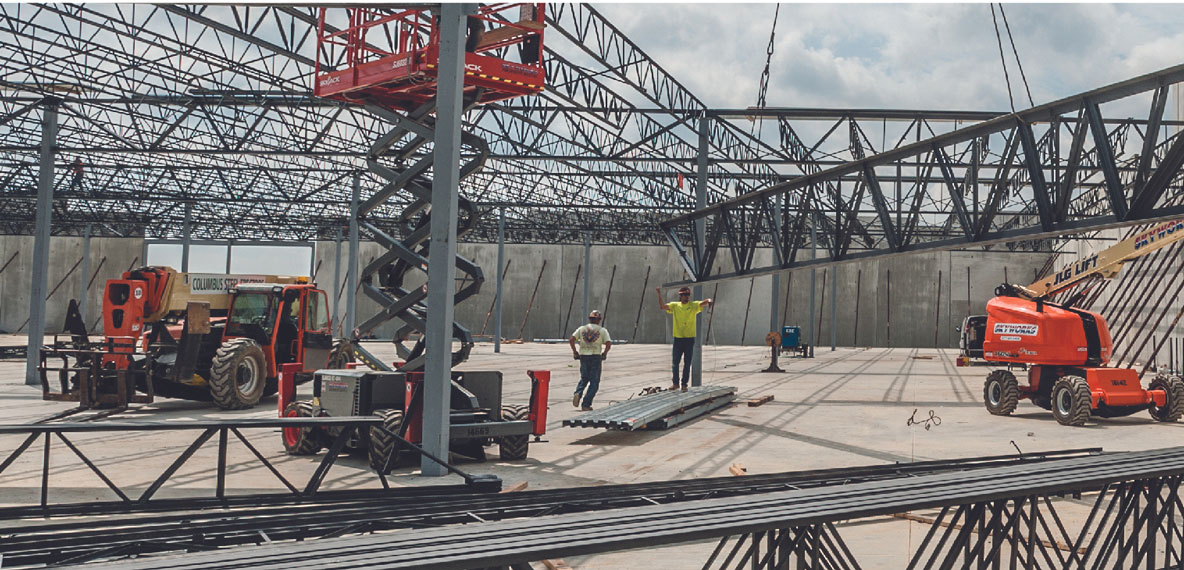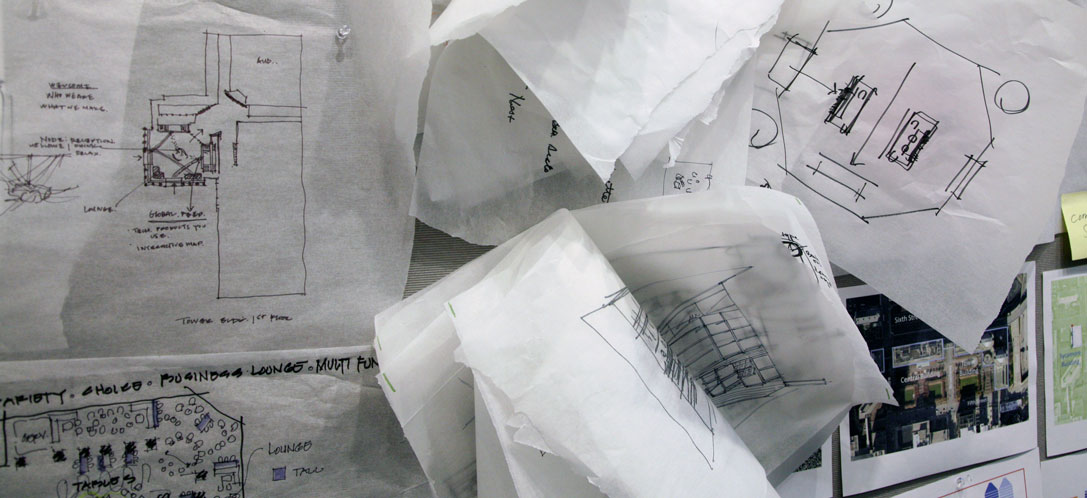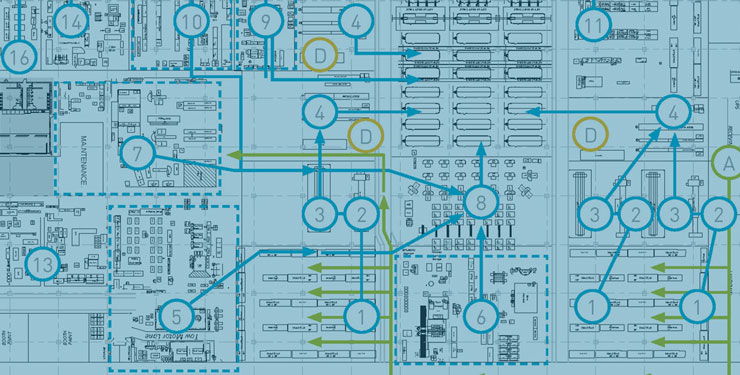
The Advantages of Integrated Project Delivery (IPD) Contracting and How Three Party Agreements Work

This white paper was co-authored by Greg Fox at Miller Valentine Construction.
In the world of construction and project management, traditional contracting methods have long been the norm. However, as industries evolve, so too do the methodologies and approaches used to achieve project success. One approach used by Miller Valentine and BHDP in highly technical environments is Integrated Project Delivery (IPD) contracting, a collaborative system that offers a range of benefits over traditional methods. In this paper, we'll explore the advantages of IPD contracting and how three-party agreements work to foster teamwork and streamline construction projects.
What is Integrated Project Delivery (IPD)
Integrated Project Delivery is a collaborative approach to construction that aims to maximize efficiency, teamwork, and shared responsibility among all project stakeholders. Unlike traditional methods, where each party(the owner, architect, and contractor) often works in silos, IPD promotes close collaboration and risk-sharing.
The Three-Party Agreement
At the core of IPD contracting is the Three-Party Agreement, which is a legal document binding the owner, architect, and contractor to work together closely throughout the project's duration. This document outlines the roles, responsibilities, risks, and rewards for each party involved.

Benefits
Enhanced Collaboration
The primary goal of IPD is to foster collaboration. By working together from the project's inception, the owner, architect, and contractor can exchange ideas, leverage their expertise, and develop a unified vision. This leads to more innovative and efficient designs and construction processes.
Early Problem Resolution
In traditional contracting, disputes and conflicts often arise late in the project, causing costly delays. IPD encourages early problem resolution as all parties are vested in the project's success. This leads to faster issue identification and resolution.
Risk Sharing
Under traditional contracts, risk allocation can be a contentious issue. In IPD, risks are shared among all stakeholders, incentivizing everyone to minimize risk and make decisions that are in the best interest of the project as a whole.
Cost Savings
The collaborative nature of IPD leads to more efficient project management and can help reduce overall project costs. By avoiding costly change orders, rework, and delays, the project budget is more likely to be maintained.
Quality and Innovation
With the combined expertise of the owner, architect, and contractor, IPD allows for a higher level of quality in both design and construction. It also fosters innovation, as the team can explore new materials, technologies, and construction methods.
Client Satisfaction
The client, as the owner, benefits from a smoother project experience, cost savings, and potentially faster project completion. This results in higher client satisfaction and can lead to repeat business and referrals.
Faster Project Completion
The collaboration and teamwork inherent in IPD typically result in faster project completion. With fewer disputes and delays, projects are more likely to stay on schedule.
Sustainability
IPD often leads to more sustainable projects as the team can work together to incorporate environmentally friendly practices and materials into the design and construction.
Three Party Agreements At Work
Getting to a Guaranteed Maximum Price (GMP) in an Integrated Project Delivery (IPD) three party contract agreement involves a collaborative process that differs from traditional contract approaches. The GMP in an IPD setting is essentially the maximum price the owner will pay for the construction project, and it's typically established through a series of steps:

Pre Contract Phase
Formation of the IPD Team: The owner, architect, and contractor come together to form a close-knit, collaborative team. Each party's expertise and input are considered right from the project's inception.
Project Development: The team works together to develop the project scope, design, and specifications. They collaborate on planning, budgeting, and scheduling.
Preliminary Budgeting
Development of a Preliminary Budget: The team creates a preliminary budget based on the design and specifications developed collaboratively. This budget includes costs for design, construction, and any other project-related expenses.
Target Cost: The team establishes a target cost that the project should not exceed. This target cost may include contingencies and allowances for scope changes.
Design Development
Design and Cost Control: The architect works closely with the contractor and the owner to develop the project design further while ensuring it aligns with the established budget. Cost control measures are employed throughout this process.
Value Engineering: The team may perform value engineering exercises to identify cost-saving opportunities while preserving the project's integrity.
Cost Estimating and GMP Proposal
Detailed Cost Estimating: The contractor, with input from the architect and other team members, prepares a detailed cost estimate for the project.
GMP Proposal: Once the design is sufficiently developed and the costs are well-defined, the contractor proposes a GMP to the owner. This GMP is based on the detailed cost estimate and should align with the preliminary budget and target cost.
Owner Acceptance
Owner Review: The owner reviews the GMP proposal to ensure it meets their budget and project objectives.
Negotiation: If there are discrepancies between the GMP and the owner's expectations, the team may engage in negotiations to adjust the GMP while ensuring the project remains within budget.
GMP Agreement
Formal Agreement: Once the owner is satisfied with the GMP and any necessary adjustments have been made, a formal agreement is reached and documented in the contract.
Shared Risk: The GMP represents a shared risk among the owner, architect, and contractor. If the project's actual cost exceeds the GMP due to unforeseen circumstances or changes initiated by the owner, the IPD team may collaboratively address the additional costs, aligning with the IPD philosophy of shared responsibility.
It's important to note that the GMP in an IPD three party agreement is not just a fixed number but a result of a dynamic, collaborative process. Throughout the project, the team continues to work together, address changes, and manage the budget to ensure that the project remains within the GMP while meeting the owner's requirements and expectations.
Partnerships Built on Trust and Mutual Benefit
Integrated Project Delivery contracting and Three-Party Agreements have the potential to revolutionize the construction industry by fostering collaboration, reducing conflicts, and improving project outcomes. The benefits of IPD contracting extend to all parties involved, with the ultimate goal of delivering high-quality projects efficiently and with client satisfaction at the forefront. As the construction industry continues to evolve, the adoption of IPD methods is a positive step toward more successful and harmonious project execution.
Author
Content Type
White Paper
Date
November 03, 2023
Market
Practice
Topic
Innovation



